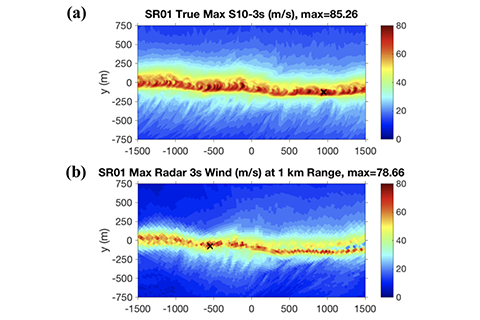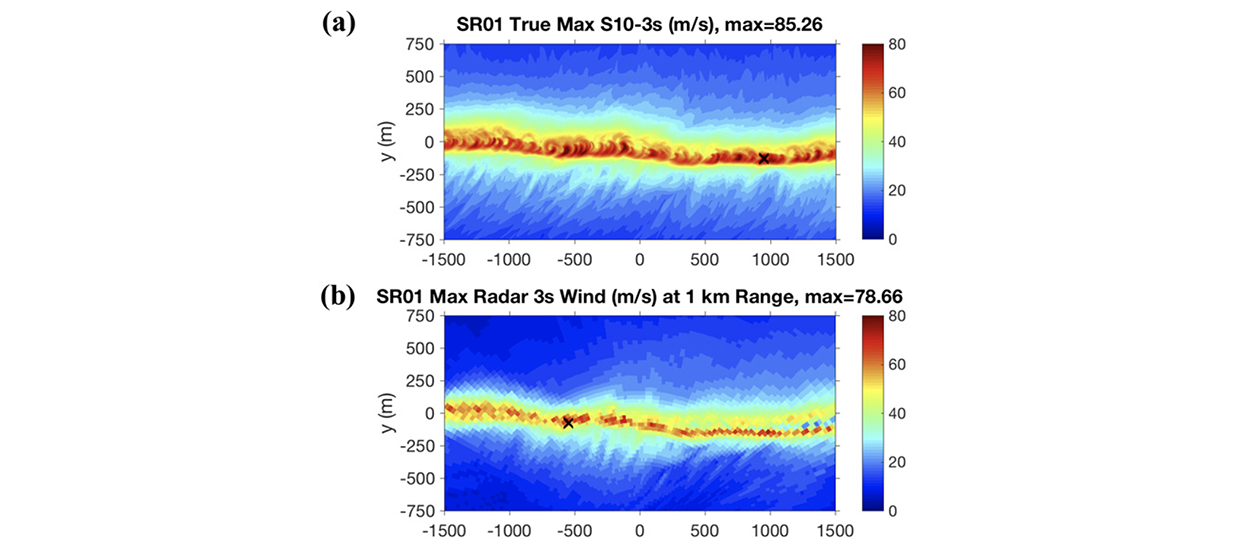In collaboration with scientists at the National Center for Atmospheric Research (NCAR), we recently completed a project using large-eddy simulations to better understand the structural and temporal variability of extreme gusts in tornadoes. We also used these simulations to assess how well observing systems – such as surface instruments or portable Doppler radars – can observe the fastest wind speeds.
Some recent publications:
Dahl, N. A., and D. S. Nolan, 2018: Using high-resolution simulations to quantify errors in radar estimates of tornado intensity. Mon. Wea. Rev.,146, 2271-2295.
Dahl, Nathan A., David. S. Nolan, George H. Bryan, and Richard Rotunno, 2017: Using high-resolution simulations to quantify underestimates of tornado intensity from in situ observations. Mon. Wea. Rev., 145, 1963-1982.
Nolan, David S., Nathan A. Dahl, George H. Bryan, and Richard Rotunno, 2017: Tornado vortex structure, intensity, and surface wind gusts in large-eddy simulations with fully developed turbulence. J. Atmos. Sci., 74, 1573-1597.
Bryan, George H., Nathan A. Dahl, David S. Nolan, and Richard Rotunno, 2017: An eddy-injection method for large-eddy simulations of tornado-like vortices. Mon. Wea. Rev., 145, 1937-1961.
Rotunno, Richard, George H. Bryan, David S. Nolan, and Nathan A. Dahl, 2016: Axisymmetric tornado simulations at high Reynolds number. J. Atmos. Sci., 73, 3843-3854.





